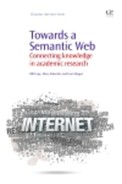List of figures and tables Figures
| 4.1 | SGML markup for the definition of ‘bungler’ in the Oxford Dictionary | 93 |
| 4.2 | Changes in textwork since Gutenberg | 97 |
| 4.3 | Parallels between old and new media | 104 |
| 6.1 | Popper’s ‘general theory of evolution’ | 153 |
| 6.2 | Knowledge in the three worlds ontology | 155 |
| 6.3 | The contextual nature of personal knowledge | 157 |
| 6.4 | John Boyd’s OODA loop concept | 160 |
| 6.5 | The systems triad in hierarchy of complex dynamic systems | 162 |
| 6.6 | The hierarchical levels of knowledge cycling in a research enterprise | 164 |
| 6.7 | General process for turning personal into explicit knowledge | 166 |
| 6.8 | Social construction and formalisation of knowledge | 169 |
| 6.9 | Socio-technical aspects of harmonising standards across different research communities | 181 |
| 9.1 | A representation of the top-level classes in the BFO ontology | 278 |
| 9.2 | A representation of the top-level classes in the DOLCE ontology | 278 |
| 9.3 | A representation of the top-level classes in the GFO ontology | 279 |
| 9.4 | A representation of the top-level classes in the PROTON ontology | 279 |
| 9.5 | A representation of the top-level classes in the SUMO ontology | 280 |
| 12.1 | Commensurability model | 353 |
| 13.1 | The interlanguage mechanism | 386 |
| 13.2 | CGML as an interlanguage | 406 |
| 13.3 | Language pairs—full interoperability of 17 schemas requires 272 crosswalks | 408 |
| 13.4 | The interlanguage approach to CGML | 409 |
| 13.5 | Fragment of the CGML Dictionary of Authorship and Publishing specifying the concepts of < creation > and < creator > | 413 |
| 13.6 | Fragment of the CGML Dictionary specifying the concept of < editor > | 415 |
| 13.7 | First to fourth level concepts of the CGML Taxonomy of Authorship and Publishing | 420 |
| 13.8 | Fragment of the CGML Taxonomy of Authorship and Publishing specifying the concept of < party > from the fourth to sixth levels | 422 |
| 13.9 | Fragment of the Dublin Core to CGML Thesaurus | 423 |
| 14.1 | Translation/transformation architecture | 437 |
| 14.2 | Outline of the technical design choice between different transformation architectures | 442 |
| 14.3 | Comparison of the CGML and COAX systems | 445 |
| 14.4 | XML content translation using the CGML transformation system | 448 |
| 14.5 | XML content translation using the COAX transformation system | 451 |
| 14.6 | XML content translation using OntoMerge | 460 |
| 15.1 | A schema of knowledge processes | 500 |
| 8.1 | Comparison of knowledge systems | 228 |
| 9.1 | Swoogle results for five search terms, 2007 and 2009 | 238 |
| 9.2 | Google Scholar results for five search terms, 2007 and 2009 | 239 |
| 9.3 | Ontology methodologies | 241 |
| 9.4 | Foundational ontologies and their ontological choices as assessed by Oberle et al. (2007) | 248 |
| 9.5 | Comparison of the number of classes, properties, concepts and ratios within ontologies | 249 |
| 9.6 | Summary of ontology orientation | 257 |
| 9.7 | Messages received on the Semantic Web Interest Group and Ontolog Forum, 2000 to May 2009 | 259 |
| 9.8 | Author and subject counts on the Semantic Web Interest Group and Ontolog Forum, 2000 to May 2009 | 260 |
| 9.9 | Joint contributors to the ontologies surveyed, and the Semantic Web Interest Group and Ontolog Forum | 260 |
| 9.10 | Ontology count for the Semantic Web Interest Group and Ontolog Forum | 262 |
| 9.11 | Ontolog Forum dialogue map | 264–7 |
| 9.12 | Ontology commensurability matrix | 273–4 |
| 9.13 | Conceptual distinctions between the ontologies | 280–2 |
| 9.14 | Word frequency analysis of the Semantic Web Interest Group and Ontolog Forum | 283–5 |
| 12.1 | Intrinsic dimensions of a knowledge system | 359–61 |
| 12.2 | Extrinsic dimensions of a knowledge system | 362–4 |
..................Content has been hidden....................
You can't read the all page of ebook, please click here login for view all page.
